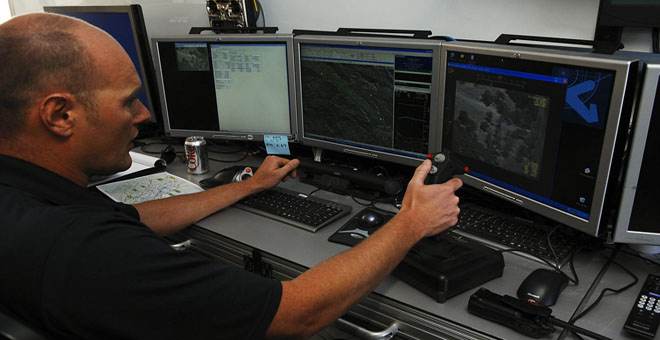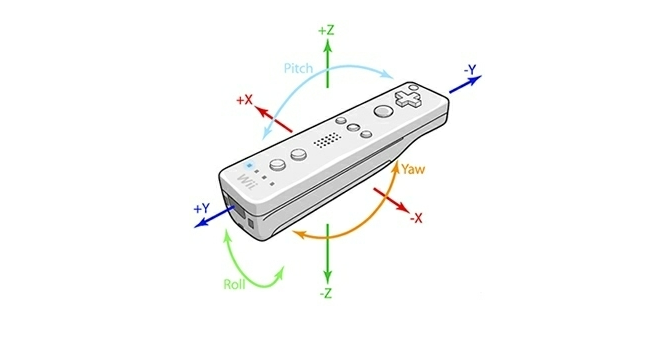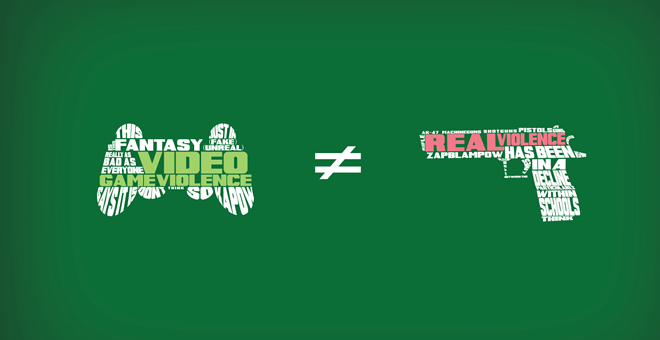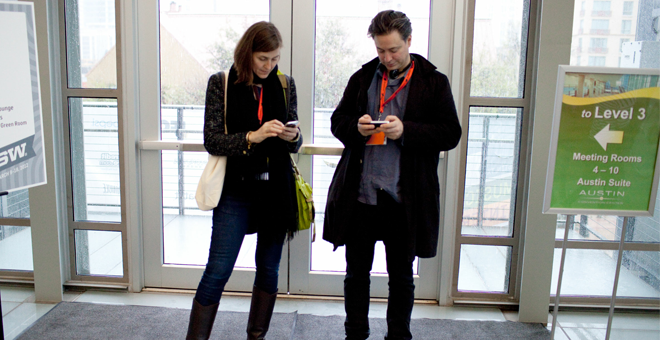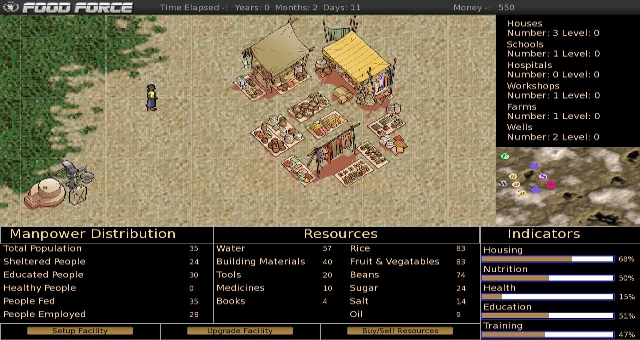 PDF Download
PDF Download

When it comes to examining the diffusion of videogames, and of computer games in particular, outside of a recreational context, the use of this peculiar tool for schooling is certainly one of the most interesting subjects an educator could hope for. In fact, owing to data collected by myself and a growing number of researchers in the field of education (Egenfeldt-Nielsen, 2006; Felicia, 2009; Wastiau, Kearney & VandenBerghe, 2009; Minoli, 2009; Lombardi, 2012), teachers are actually intrigued by the educational potential of digital games, but have no idea how to harness this latent power and/or can’t work out how to accommodate the medium specificities in the school curriculum.
Still, the potential for learning is evident. It would not be incorrect to claim that every fraction of a second of gaming requires the player to learn something, whether hand-to-eye coordination or virtuoso-like skills of key pressing, or even game-related information: learning is definitely not a side effect while playing videogames. So far, however, the relationship between education and digital gaming has mostly been represented by edutainment titles, whose underlying pedagogical model hardly fits any learning practice in school (Gee, 2007; Egenfeldt-Nielsen, 2007), and whose gameplay is normally trivial and “primitive” (Prensky, 2006).
The purpose of this essay is to provide a schematic overview of alternatives to edutainment for language education. Firstly, educational theories and approaches will be identified in order to find operational principles for building a ludic methodology. As the guidelines are formed, the reshaped role of the key factors (learner, teacher, object, setting) in teaching and learning processes will be discussed, as will, of course, the enrichment brought by computer games when used as educational tools.
Behind edutainment, beyond edutainment
In the USA, the country that produces and consumes the majority of edutainment titles, the market for edutainment hit its peak during the late 1990s, and had a $495.8 million revenue in 2000, gradually dropping to $152 million in 2004 (Egenfeldt-Nielsen, 2007); meanwhile, as the Entertainment Software Association states, the real annual growth rate of entertainment digital games sales in North America has been 16.7% for the period 2005–2008 and 10.6% for the period highly affected by the economic crisis between 2005 and 2009, resulting in a contribution to the U.S. GDP of $4.9 billion (Siwek, 2010).
Statistical and economic data demonstrates that edutainment sales are dropping, while the gaming market keeps on flourishing. Egenfeldt-Nielsen (2007) ascribes this trend to a growing critical knowledge in buyers that educational games should not be focused on the needs of teachers and parents, but rather on children’s preferences as players: the play experience needs to be a genuine and fun one, as well as educational, and not just a collection of drills hidden behind an exposed façade of playfulness. Egenfeldt-Nielsen states:
children, too, are probably too smart to be cheated by the discount games that edutainment often are. If we look at the computer game titles that generally dominate the commercial hit charts, it is clear that these are not discount games, but are the result of state-of-the-art expertise in all the areas necessary to make a game . . . . [E]ducational software lacks the coolness of the games industry, the state-of-the-art technology, the constant innovation in gameplay but perhaps, most importantly, the basic desire to produce entertaining products beyond anything else. (Egenfeldt-Nielsen, 2007, p.41)
In terms of game design, edutainment titles are in fact hardly video games at all (Paciaroni, 2008), since they lack or fail to respond to the fundamental rules of gaming suggested by Crawford (1984) and Salen and Zimmerman (2004). Such an abrupt decline of popularity, though, should not be attributed to poor game design alone: at an inner level of analysis, the learning theories that constitute edutainment’s intended educative basis have proven fallacious; most educational games do not promote meaningful learning (Novak, 1998), and are instead focused on rote learning, mechanical training, drill-and-practice tasks, and instilling knowledge into the learner’s mind—practices that reveal a particularly evident reference to the core of a behaviourist theory of learning 30.
Towards an integrated approach to language education
The main principle of behaviourism is, approximately, the creation of learning habits achieved by an alteration in learners’ behaviour, thanks to practice, repetition, and reinforcement: through reiterated routines and practice, learners are eventually conditioned to respond in a determined way to a certain stimulus. It’s a kind of learning that can be defined, in reference to language especially, as parrot-like (Lombardi, in press)—mechanical, impersonal (as it does not relate with prior personal knowledge), focused on automatic reactions alone, neglecting reflection and lateral thinking, as well as parameters such as personality and affectivity.
Of course, it may work, and it surely does 31 in some respects: memorization is still a kind of learning, and a popular one in schools, which many times fails in educating pupils in critical learning. One may even argue that, in the classroom, learning by heart (too) often equals learning per se.
Still, when it comes to language education, recent literature severely criticizes behaviourist approaches or methods: effectively learning a second or foreign language does not mean putting new labels on known objects (Martinet, 1960) and memorize them, or practising linguistic notions until they become a second nature; it rather requires opening up to a whole new grammatical, socio-pragmatic, paralinguistic, extra-linguistic, and, most of all, cultural apparatus. A broader approach should then be preferable. In foreign language teaching a suitable reference model is the integrated approach (Bosisio, 2005; Lombardi, in press): a “background philosophy” in which constitutive elements—those proven to be effective in teaching practice—are selected from traditional approaches and integrated into a malleable set of teaching recommendations, thus creating a potential range of working operational instructions and classroom techniques, from which the teacher can choose, from time to time, the most appropriate.
The approach suggested by Egenfeldt-Nielsen (2006, 2007) for learning history through digital games definitely follows these dictates, and can easily, and most of all effectively, be applied to second or foreign language teaching and learning.
The theoretical principles that feed an integrated approach that includes computer games among its techniques should, first of all, be looked for in a socio-cultural educational theory (Wertsch, 1991), from which the broader process of using video games as a tool for learning, by stressing the role of context, actors (both learners and educators) and their mutual interaction, experiences, and culture ensues. A constructionist approach (Papert & Harel, 1991) should then be taken account of “the construction of knowledge, as meaningful through orientation in a social context, becomes paramount . . . . Instead of conceiving content, skills and attitudes as residing within the user, knowledge is transferred to culture, tools and communities” (Egenfeldt-Nielsen, 2007, p.88).
Computer games are also decidedly virtual locations for real situated learning (Lave & Wenger, 1991; Wenger, 1999); hence, abstract and de-contextualized learning objects are again thrown aside in favour of cooperation and co-construction of knowledge, usually within a community of practice.
Key elements of affective humanistic approaches to education, as well as communicative and constructivist approaches, will also be taken account of in building a coherent methodology, that is the fulfilment of the integrated “philosophy”.
Principles of a ludic methodology
As previously stated, in order to come into effect, an approach has to take shape within an appropriate methodology. A methodology can be defined as a collection of principles and actions that intend a didactic purpose (Balboni, 1999; Bosisio, 2005). Besides being coherent with the reference approach, it has to constitute a guideline for teaching techniques—in this case, techniques that use computer games as an effective tool for (language) learning.
It should consequently not come as a surprise that the most suitable methodology for reaching such objectives is usually referred to as ludic methodology. Ludic here is a key adjective: it does not merely mean “playful”, it also involves the philosophical and anthropological concept of ludicity (Caon & Rutka, 2004; ConceiçãoLopes, 2005, 2008; Rutka, 2006; Lombardi, in press), that is the social phenomenon—“indicating a quality and a state that are not just characteristic of childhood, but that are shared by all age groups” (Conceição Lopes, 2005, p.3) — derived by a play situation (Huizinga,1939), an intrinsic attitude characterized by gratuitousness, liberty, enjoyment, creativity, and a relationship with the world around oneself.
Learning, therefore, should not be fun(if it is actually fun, as in games, much the better): learning should respect this fundamental stateof humankind, which since the early childhood stands up as the main resource for discovering, experiencing, growingup (Bruner, 1983) — the cornerstones of education in its broadest sense.
A ludic methodology for language learning features a particular attention to the following (Freddi, 1990; Caon & Rutka, 2004):
- Learning contexts: widespread ludicity is peculiar, as I have said. A proper, ludic learning environment, though, should also consider social dynamics, relationships in the peer group, promote cooperation, and, where possible, co-construction of knowledge, starting from the learners’ actual communicative needs—on the pattern of Community language learning (Curran, 1976).
- Centrality of learner: “learner” is not an abstract concept, it means “person in the process of attaining a goal”. Its personality, its emotionality, its affectivity, its socio-pragmatic and communicative needs, its choices, as well as sex, age, learning style, and so on, must be taken account of. In this play of constantly evolving educational processes, the learner plays the leading role, with correlated “rights” and “obligations”—as in video games, he or she is the protagonist.
- Meaningful learning (Rogers, 1969; Ausubel, Novak & Hanesian, 1978; Novak, 1998): with the learners as the centre of the educational process, learning objects should be linked to their prior existing cognitive structures and incorporated into prior knowledge, thus creating the optimal conditions for significant learning.
- Multi-sensuous engagement and motility: learning is certainly not an exclusive right of sight and hearing. Among the teaching techniques that involve video games for language learning, the most intriguing ones use TPR-like structures (Asher, 1977) in combination with Nintendo Wii, Microsoft Kinect, Sony PlayStation Move (Lombardi, in press);
- Pluriculturalism and cultural relativism: a methodology that promotes language education can not evade focusing on the fact that every language, and therefore every culture, has equal standing, and can not be judged by a “monolithic(ultur)al” viewpoint. The interest for linguistic and cultural diversity must then be encouraged—and digital games are one of the most powerful tools when it comes to discovering and spreading such values 32 (Zanoli, 2010; McGonigal, 2011; Lombardi, in press).
The “edurector” metaphor
Adopting a language-teaching methodology also generally means rethinking the role of the main factors that characterize a teaching act; therefore, learner, teacher, object (language) and setting should be strongly taken into account, especially when applying a ludic pattern. As for the learner, its central, active, pro-active (if possible), collaborative, and responsible role has already been mentioned above. The context, or setting, will be discussed in the next section, as it involves a few issues of a technical and organizational nature.
With reference to the teacher, it seems almost self-evident that a classical magister ex cathedra model may not be particularly productive here: the ideal transmission of knowledge from one single source to the pupils’ minds is neither learner-centred nor motivating or engaging at all. A much more appropriate figure would be that of a facilitator of learning (Serra Borneto, 1998), mediating the knowledge, assisting the student, promoting resources, and so on. Even more pertinently, the role of the teacher could be reshaped as an edurector (Lombardi, in press); obviously an amalgamation of educator and director, the metaphor outlines the portrait of a teacher who:
- Directs the “players” (i.e. looks after students), supports their motivation, points their attention towards elements of significance, watches over involved social dynamics, holds the reins on the group, suggests and organizes activities, and shares with “actors” the responsibility for the fulfilment of established didactic ends.
- Educates, and must therefore be aware that a teacher’s final task is not just to teach (a second or foreign language), but rather to actively contribute to the development of a human being, to accompany a project of life: non scholae sed vitae.
- Promotes values, instead of mere information.
An edurector who encourages the use of computer games as a tool for approaching a foreign language should furthermore become a tecno-educator, that is a promoter of an effective use of technologies, in order to avoid their dangerous trivialization: he or she is called to advisedly educate to digital games, and not just teach with these instruments.
With regard to the object of teaching, that is language in its broadest sense, the role of digital games is extremely flexible. In fact, video games are an undeniable source of language (usually in the form of text and/or audio), and the characteristics of said language are the most varied: text is functional during gameplay, in the interface above all; text represents the narrative component of the video game; language may be reduced to a minimum; or it may be the fulcrum of the user-machine interaction; plus, it is naturally the main communicative resource in online gaming.
Much obviously depends on the genre of the video game; beat ’em up games usually (not always, though) show a mostly pragmatic use of language, while adventure games or RPGs tend to store in language, in the interaction among characters, vital information for the development of the game itself.
The choice of a computer game for language education, therefore, must be advisedly weighed up by the teacher-edurector, not just depending on content or vehiculated vocabulary (i.e. the error of edutainment), but also on communicative functions and notions (Wilkins, 1976), on the degree of language authenticity, on the cultural extent of the game, on its appeal and significance to learners. Video games are not meant to be used, again, as a mean to teach language, but rather as an approach to a foreign language, which can be discovered, used and experienced, in the direction of a desirable learning by doing, instead of just memorized and “learnt”.
Setting issues: prerogatives and proposals
A digital game, being a tool for language discovering and handling, is probably best used in teaching techniques, as it can under no circumstances be a stand-alone activity, but rather integrated into a continuum whose objective is to motivate to learning.
Motivation is, and has to be, the first phase in a learning unit—and a tricky one: getting off on the wrong foot likely means facing a rise of the affective filter (Krashen, 1982, 1985), to witness the fading of intensity and persistence in will, and finally, in this context, to dissipate ludicity. Placing computer game-based techniques in such a crucial position, therefore, must be done accurately: most amateur attempts are believed to have failed because of an excessive trust in video games being motivating tools per se (Egenfeldt-Nielsen, 2007; Felicia, 2009; Wastiau, Kearney & VandenBerghe, 2009).
The choice of an appropriate game should consider with at least two fundamental principles of the motivation phase:
- Exploration: video games take the concept of exploration itself to a new level of meaning, compared with other tools and traditional media, by allowing first-person action and participation, as well as control on, and freedom of, movement in the digital environment—that is an experience as close as possible to the learner’s ego (Titone, 1973).
- Culture: explicit grammar does not usually motivate students in learning a second or foreign language, or at least not as much as the cultural substratum (Brooks, 2000) of the language does (Porcelli, 1994; Byram, Morgan, 1994; Hinkel, 1999). Computer games make it possible not just passive observation, but to temporarily live a simulacrum’s “existence”, and experience a new environment (Bittanti, 2006), as well as depict a new point of view on the world, characterized by different patterns of thought, of behaviour, of life (Jedlowski, 1994).
An alternative approach, embraced by Squire (2004) and Egenfeldt-Nielsen (2007) in projects concerning learning history through computer games, can be effectively applied to the context of language education (Zanoli, 2010; Lombardi, 2011). Some video games, in fact, may also be used as a support for learning, as a reinforcement—the last but one phase of a standard learning unit, preceding evaluation. In this peculiar position, they are used to organize and systematize the linguistic-communicative structures that have been previously practised, by putting them to work in a simulated situation, which is perceived as real and meaningful (Lombardi, in press).
One question is now likely to arise: in light of what has been debated up to this point, is the classroom an effective and meaningful environment for the use of educational computer games? Or does the nature of digital gaming itself rule out the institutional paradigm as we know it?
The answer is, of course, twofold. Schools may, in fact, provide a concrete ludic environment, as they naturally assemble a community of learners (each of whom brings to the peer group his or her own personality, habits, knowledge, experience, culture, emotions) and at least one (language) educator. On the other hand, video game play sessions hardly fit into school schedules, and the classroom architecture often prevents such activities, not to mention the fact that schools may (or usually) lack the sufficient technological equipment. Moreover, the idea of acknowledging games in general, and computer games overall, as educational instruments still meets with opposition among principals, teachers, parents, and students as well, who are normally used to considering digital gaming as a leisure activity, and may distrust their educational value, as Egenfeldt-Nielsen (2007) points out.
Leaving computer games in their “natural” setting (i.e. at home) may solve some of these issues, but poses a different set of problems, such as the absence of the main fulcrum of extrinsic motivation (which is still a powerful boost for learning), the teacher; the lack of a linguistic-communicative backup; the solitary fruition; the perception of gaming as homework—peculiarities that not only change the process of applying educational technologies to language teaching, but also automatically alter the results, and may therefore affect the much praised effectiveness of the activities.
This dichotomy may be solved with the adoption of a blended setting. Such tools could be used, when necessary, both in the classroom and at home, with different instructions and teaching purposes. In this way, video games have the opportunity not to alter their educational characteristics according to the teaching situation, which would cause an unpleasant loss of meaningfulness, and instead be employed only when they can effectively reach their target.
Conclusion: playing with the future of language (teachers) education
So far, digital gaming has been classified in the paradigm of language education: as a teaching technique, an experiential tool for learning, or—an opportunity that school should not neglect—as a remedial activity for underachievers. It is still one option among many, however, and probably not the easiest one to set, as debated above. Therefore, a language teacher could easily wonder why he or she has to strive to become an edurector, to look for appropriate video games, to overcome technical difficulties, and so on. The answer: because it can prove successful (Felicia, 2009; Wastiau, Kearney & Van den Berghe, 2009; Lombardi, 2012; Lombardi, in press), provided that the teacher knows how to harness the educational prerogatives of digital games.
Edurectors, thus, may or may not be gamers themselves; the familiarity with the tool, as Egenfeldt-Nielsen (2007) states, helps a great deal in involving the pupils, but may cause the teacher to fall on presumptions, to take necessary steps for granted, and to finally frustrate the students by leaving them behind in their wave of enthusiasm; unfamiliarity instead usually makes it harder to make the first move towards educational gaming, but allows the teacher to actually learn with the students—but still, edurectors should be taught the advantages of ludic language teaching, the assessment and choice of suitable games, the organization, administration, and evaluation of gaming activities and “debriefing” sessions, as well as the ability to promote ‘healthy and safe gaming habits’ (Patricia, 2009, p. 4)—that is the education to the medium. A teaching profile is, in fact, something that can’t simply be improvised; teacher education has to be consequently rethought and reshaped in order to undertake such a “methodological challenge” (Caon, 2006).
International documents and guidelines—for example the European Profile for Language Teacher Education (Kelly, Grenfell, 2004), and the A.N.D.R.O.M.E.D.A. project (Bosisio, 2011)—have already urged the integration of media education into language teacher training curricula; it would now be worth wishing for the next step to be taken: the definitive inclusion of video games into a number of teaching tools for language teachers to be employed in all grades of school, according to needs and specificities. The goal would be to eventually overcome the distrust towards the medium (Egenfeldt-Nielsen, 2007; Lombardi, 2012) and realize that “games are, in the end . . . teachers. Fun is just another word for learning” (Koster, 2005, p. 46).
– All images belong to their rightful owner. Academic intentions only. –
References
Asher, J. J. (1997). The Total Physical Response: Theory and Practice. In H. Winitz (Eds.), Native Language and Foreign Language Acquisition (pp.324–331). New York Academy of Sciences.
Ausubel, D. P., Novak J. D., & Hanesian H. (1978). Educational psychology: A cognitive view. New York, NY: Holt, Rinehart and Winston.
Balboni, P. E. (1999). Dizionario di glottodidattica. Perugia, Italy: Guerra.
Bittanti, M. (2006). Viaggi virtuali nella mia camera. Il videogame tra simulazione ed esplorazione. In I. Fusco (Ed.), Virtual Geographic. Viaggi nei mondi dei videogiochi (pp. 93–111). Milan, Italy: Costa & Nolan.
Bosisio, C. (2005). Dagli approcci tradizionali al Quadro comune europeo di riferimento. Riflessioni glottodidattiche e applicazioni per l’insegnante di italiano L2. Milan, Italy: I.S.U. Università Cattolica.
Bosisio, C. (Ed.). (2011). Il docente di lingue in Italia. Linee guida per una formazione europea. Milan, Italy: Mondadori Education.
Brooks, N. (2000). Teaching Culture in the Foreign Language Classroom. Mosaic. A Journal for Language Teachers, 7(2), 3–17.
Bruner, J.S. (1983). Child’s Talk. Learning to Use Language. New York, NY: W.W. Norton & Company.
Byram, M., & Morgan, C. (1994). Teaching-and-learning Language-and-culture. Clevedon, UK: Multilingual Matters.
Caon, F. (2006). Pleasure in Language Learning. A Methodological Challenge. Perugia, Italy: Guerra.
Caon, F., & Rutka, S. (2004). La lingua in gioco. Attività ludiche per l’insegnamento dell’italiano L2. Perugia, Italy: Guerra.
Conceição Lopes, M. (2005, June). Ludicity – a theoretical term. Proceedings of The Biases of Media, Sixth Annual Convention of Media Ecology Association. Retrieved from http://www.tasplay.org/taspfiles/pdfs/lopesludicitypaper.pdf
Conceição Lopes, M. (2008). Ludicity: a Theoretical horizon for understanding the concepts of game, game-playing and play. In M. Stanfield & T. Connolly (Eds.), 2nd European Conference on Game Based Learning Proceedings (pp. 275–284). Reading, UK: Academic Publishing Limited.
Crawford, C. (1984). The Art of Computer Game Design. Retrieved from http://www.vancouver.wsu.edu/fac/peabody/game-book/ACGD.pdf
Curran, C.A. (1976). Counseling-Learning in Second Languages. Apple River.
Egenfeldt-Nielsen, S. (2006). Overview of research on the educational use of videogames. Digital Kompetanse, 3 (1), 184–213.
Egenfeldt-Nielsen, S. (2007). Educational Potential of Computer Games. New York, NY: Continuum.
Felicia, P. (2009). Digital games in schools. A handbook for teachers. Brussels, Belgium: European Schoolnet.
Fernández-Vara, C. (2009).The Secret of Monkey Island: Playing Between Cultures. In D.Davidson (Ed.), Well Played 1.0: Video Games, Value and Meaning (pp. 307–326). Pittsburgh, PA: ETC-Press.
Freddi,G. (1990). Azione, gioco, lingua. Fondamenti di una glottodidattica per bambini. Padova, Italy: Liviana.
Gee, J.P. (2007). What Video Games have to teach Us About Learning And Literacy. NewYork, NY: Palgrave Macmillan.
Hinkel, H. (1999). Culture in Second Language Teaching and Learning. Cambridge University Press.
Huizinga, J. (1939). Homo Ludens. Versuch einer Bestimmung des Spielelements der Kultur. Amsterdam, Netherlands: Pantheon.
Jedlowski, P. (1994). Il sapere dell’esperienza. Milan, Italy: Il Saggiatore.
Johnson, W.L. (2007). Use of a Serious Game for Language Learning. In R. Luckin, K. R. Koedinger & J. Greer (Eds.), Proceeding of the 2007 conference on Artificial Intelligence in Education: Building Technology Rich Learning Contexts That Work (pp. 67–74). Amsterdam, Netherlands: IOS Press.
Johnson, W.L., Marsella, S., & Vilhjálmsson H. (2004). The DARWARS Tactical Language Training System. Proceedings of the Interservice/Industry Training, Simulation, and Education Conference (I/ITSEC). Retrieved from http://citeseerx.ist.psu.edu/viewdoc/download?doi=10.1.1.117.601&rep=rep1&type=pdf
Johnson, W.L., C. S. (2005). Serious Games for Language Learning: How Much Game, How Much AI?. In C.K. Looi, G. McCalla, B. Bredeweg & J. Breuker (Eds.), Artificial Intelligence in Education Supporting Learning through Intelligent and Socially Informed Technology (pp. 306–313). Amsterdam, Netherlands: IOS Press.
Kelly, M., & Grenfell, M. (2004). European Profile for Language Teacher Education: A Frame of Reference. University of Southampton.
Koster,R. (2005). A Theory of Fun for Game Design. Scottsdale, AZ: ParaglyphPress.
Krashen, S.D. (1982). Principles and Practice in Second Language Acquisition. Oxford, UK: Pergamon Press.
Krashen, S.D. (1985). The Input Hypothesis.London, UK: Longman.
Lave, J., & Wenger, E. (1991). Situated Learning: Legitimate Peripheral Participation. Cambridge University Press.
Lombardi, I. (2011). Nutrire il Pianeta, Energia per la Lingua. Elementi di glottodidattica in un serious game sul mutamento climatico. Nuova Secondaria, 29 (2), 77–80.
Lombardi, I. (2012, April 2012).Upgrading language teachers: language educators, techno-educators, edurectors?. Paper to be presentedat “Innovations in Technology-Mediated Language Learning”, CCERBAL Conference, University of Ottawa.
Lombardi, I., (in press). Game [not] over. I videogiochi come strumento per la glottodidattica ludica. Perugia, Italy: Guerra.
Martinet, A. (1960). Éléments de linguistique générale. Paris, France: Armand Coli.
McGonigal, J. (2011). Reality is Broken. Why Games Make Us Better and How They Can Change the World. New York, NY: Penguin Press.
Minoli, A. (2009). Videogiochi e apprendimento. Intervista esclusiva con Patrice Chazerand, uno dei massimi esperti europei in materia di media applicati all’educazione. Edu-tech Magazine,1(1), 19.
Novak, J.D. (1998). Learning, Creating, and Using Knowledge: Concept maps as facilitative tools for schools and corporations. Mahwah, NJ: Lawrence Erlbaum.
Paciaroni, M. (2008). Gioco, virtualità, simulazione. Nuove prospettive tra cultura videoludica e apprendimento. Edizioni Università di Macerata.
Papert, S., & Harel, I. (1991). Constructionism. New York, NY: Ablex Publishing Corporation.
Porcelli, G. (1994). Principi di glottodidattica. Brescia, Italy: LaScuola.
Prensky, M. (2006). Don’t bother me, Mom, I’m learning! How computer and video games are preparing your kids for 21st century success and how you can help. St. Paul, MN: Paragon House.
Rogers, C.R. (1969). Freedom to Learn: A View of What Education Might Become. Columbus, OH: Merril Pub. Co.
Rutka, S. (2006). Non solo giochi: il concetto di ludicità. In.It, 19, 11.
Salen, K., & Zimmerman, E. (2004). Rules of Play: Game Design Fundamentals. Cambridge, MA: MIT Press.
Serra Borneto, C. (Ed.). (1998). C’era una volta il metodo. Tendenze attuali della didattica delle lingue straniere. Rome, Italy: Carocci.
Siwek, S.E. (2010). Video Games in the 21st Century. The 2010 Report. Retrieved from http://www.theesa.com/facts/pdfs/VideoGames21stCentury_2010.pdf
Squire,K. (2004). Replaying History. Learning World History through playing Civilization III (unpublished doctoral dissertation). Department of Instructional Technology, Indiana University.
Titone, R. (1973). A Psycholinguistic Definition of the “Glossodynamic Model of Language Behaviour and Language Learning”. Rassegna Italiana di Linguistica applicata, 5(1), 5–18.
Wastiau, P., Kearney, C., & VandenBerghe, W. (2009). How are digital games used in schools? Complete results of the study. Final report. Brussels, Belgium: European Schoolnet.
Wenger,E. (1999). Communities of Practice: Learning, Meaning, and Identity. Cambridge University Press.
Wertsch,J.V. (1991). Voices of the mind: A sociocultural approach to mediated action. Cambridge, MA: Harvard University Press.
Wilkins, D.A. (1976). Notional Syllabus. Oxford University Press.
Zanoli,F. (2010).Videogiochi e italiano L2/LS. Italiano Lingua Due, 2 (1), 141–153.
Ludography
Castle of Dr. Brain, Sierra, USA, 1991.
Math Blaster, Knowledge Adventure, USA, 2005.
English Training, Plato/Nintendo, Japan, 2006.
The Oregon Trail, Minnesota Educational Computing Consortium, 1974.
The Incredible Machine, Kevin Ryan & Jeff Tunnell, 1992–2001.
DARWARS Tactical Language, DARWARS, USA, 2003–2011.
The Secret of Monkey Island, LucasArts, USA, 1990.












